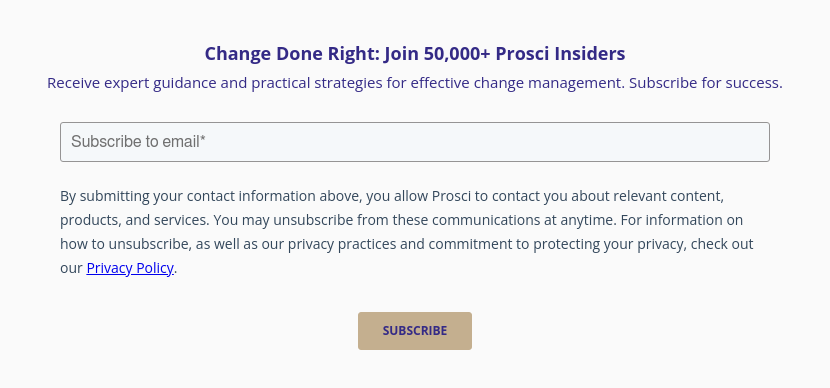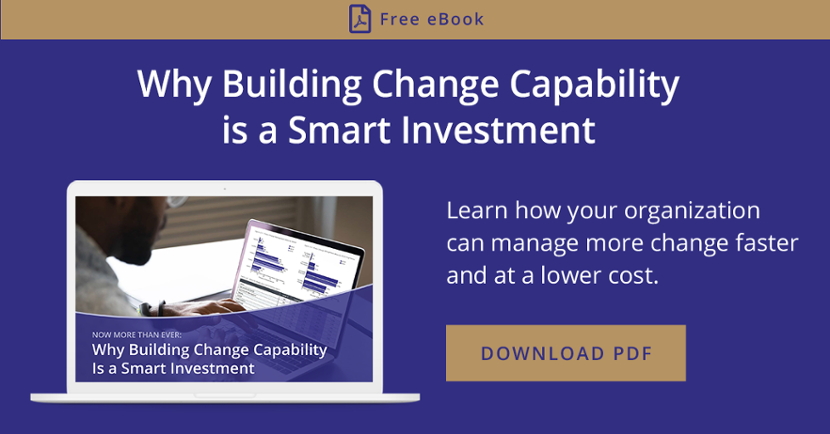3 Ways Change Management in Ireland's Public Sector Reflects the World
5 Mins
Updated: August 5, 2024
Published: October 5, 2022

Change management in Ireland's public sector reflects what is happening in the public sectors of Europe and probably much of the world. Although change management as a discipline is not as far along on the maturity journey as the U.S., Australia or some other countries, we’re seeing increased awareness about the ADKAR Model and desire for building change management capability. No matter where you live and work, the road being paved for change management in Ireland offers insights for anyone who leads change in government, the public sector, and beyond.
Change Management in the Public Sector
Change management is still a young discipline in Ireland, although that is changing. Adoption of project management as an approach across Ireland's public sector has been growing over the last two decades, and the pace of adoption has increased dramatically in the last five years. Today, we’re witnessing a sea change in how project management is perceived, as well as its application and adoption across all parts of the public sector. As more and more work gets “projectized,” it’s bringing change management along with it. My expectation is that we’ll see similar developments in change management over the next decade but at a faster pace.
Currently, public-sector organizations and governments struggle with challenges around commitment for change management and its application, as well as where it fits in the organization. It can still be misunderstood as communications and training with a focus on managing resistance, rather than as a tool for driving engagement and maximizing benefits realization. Helping leaders understand what it is, how it adds value, and its true potential is part of the journey we’re on.
Managing Change in Ireland's Public Sector
Although change management maturity may be lower in Ireland, the public sector challenges mirror those in many countries across the globe in three primary ways:
1. Dramatically increasing volume and velocity of change
Organizations in Ireland’s public sector are seeing a massive cultural change in relation to hybrid working, digital transformation, and ongoing repercussions of the pandemic on working life. Even though organizations are returning to the workplace, they're still working to digitally transform while addressing labor and skills shortages, a recovering economy, logistical challenges, and pent-up demand and opportunities.
Because organizations are shifting from long-held views about the nature of the workplace, and how people collaborate and innovate, cultural issues need to be addressed before people can be successful with the changes in their working environments, whether they are adopting hybrid working or have returned to in-person models. It’s important for leaders to realize that issues emerge as a result of any of these changes, even when employees support them.
Like government organizations in other countries, Ireland’s public sector has a huge and varied change agenda. In Ireland, we have policy responses to address the housing capacity crisis, including doing our part to support Ukrainian refugees. We have a national development plan that extends out to 2030 as well as Project Ireland 2040, the overarching strategy for government. We have a climate action plan with sustainability goals to achieve, the National Digital Strategy and the ICT strategy for the public service, to name just a few. So, there's an awful lot of change hitting government departments, local authorities and state agencies at the same time. Clients are reporting that they're saturated with change at a time when people are exhausted from the impacts of the pandemic.
2. Recognition of project management as a core competency
The volume and velocity of change is coming at a pace that is difficult for organizations to absorb, which has led to an emphasis on “projectizing” work. Organizations are creating projects, programs and portfolios, and setting up project management offices (PMOs) like never before.
Adding this formalization to the matrixed structure of work across the public-sector organization creates a significant challenge for people because they must deliver successful projects while concurrently adopting project management approaches, tools and methodologies, behaviors, roles and responsibilities, processes and more.

Although recognizing the need for project management is certainly good for the public sector’s advancement, capability development often focuses too heavily on the technical side of projects without sufficient attention to the necessary and complementary change management capabilities. Because, of course, standing up a PMO is itself a significant, high-risk project for the organization, and impacted people must adopt and use the associated changes for it to produce the intended outcomes.
Further, project management as a discipline is still maturing. Even more experienced project teams tend to conflate project deployment with success. We know from two decades of Prosci research that organizations of all kinds achieve more successful outcomes when they focus on both the technical sides and people sides of change.
3. Challenges delivering change in a complex government system
Any large organization, public or private, will recognize the challenges that come from trying to deliver change in a complex, siloed organization. These challenges compound in the public sector where the breadth of the stakeholder landscape and nature of policy issues involve disparate departments or agencies with distinct perspectives, priorities and needs.
Resourcing can also be difficult because change management is still widely considered a “nice-to-have.” The Irish Public Service is lean per capita, relative to many other countries, and there is a strong emphasis on generalist skills that enable employees to move between areas in response to changing needs. That naturally creates a dearth of needed specialists with deep expertise and limits development of individual and systemic capabilities in change management.
Smaller teams often take on change projects on a part-time basis in addition to their regular work, reporting to multiple project managers. Even when individuals and departments understand the value change management brings in greater adoption and usage, increased ROI, reduced saturation and fatigue, and other measurable benefits, competing priorities make it hard to devote the time and focus required for effective change. The project or initiative can suffer as a result.

However, we are seeing more situations where individuals experience value from integrating change management with project management at the project or program level and are successfully gaining commitment from leaders in the organization for change management. Our own work includes helping public-sector organizations build change management capability with structure and intent. Otherwise, a lack of a common language around change or understanding of the critical roles needed in change can be significant barriers to success. Without a structured, repeatable methodology and process, government organizations can find themselves relying on those enthusiastic, committed individuals who often have to reinvent the wheel each time they implement a change.
Addressing Change Challenges in
the Public Sector
Whether you work in the Irish public sector or other parts of the world, these change challenges will surely resonate. Here’s how to start addressing them.
Debunk the myth of the technical challenge
We need to shift the way we think about organizational change. Instead of viewing it as a technical response to challenges, such as anticipating employee resistance, we should focus on change management as a systematic way to improve the employee experience. For example, the talent shortages happening today are not really a “great resignation” from the job market—they’re just rearranging the deck chairs. Employees are leaving their jobs for what they perceive as better experiences in other organizations.
Change management gives impacted people a voice, helps them overcome barriers, and prepares and equips them to be successful with changes. It helps organizations retain employees because change management makes it possible for individuals to be successful at work. And it’s simply the right way to treat people during change.
Adopt a strategically integrated approach to change
When implementing a project management office or function, we must move away from an outdated approach to its design and capabilities, which is often focused disproportionately on the technical side of projects. The 21st century PMO needs holistic capabilities in change and innovation management to deliver the intended project benefits in complex organizational or sectoral systems.
Integrating the data from the people side of change with project, program and portfolio governance enables organizations to select and prioritize projects, measure performance, avoid saturation, better schedule initiatives, and maximize the benefits they get from investments in project work.

Approach change management with structure and intent
Organizations that are new to change management can find it difficult to gain commitment and support for change management. It starts by identifying and engaging the right executive sponsor, then respectfully exposing them to ideas without inadvertently giving them the message that everything they have been doing all along has been wrong.
By sharing change management research and best practices, facilitating a review of the change management maturity model, or delivering change management training and workshops, we intentionally seed conversations around what’s really important for the organization’s success.
Change Management's Value in Government
Change management is growing as a discipline in Ireland’s public sector, despite the challenges common to public sector organizations. If your organization is exploring project management, standing up a PMO, or delivering a particularly complex initiative, systematically addressing the way the organization addresses changes will produce far better outcomes, even when working with the complexities and constraints typical in government and public sector organizations everywhere.



